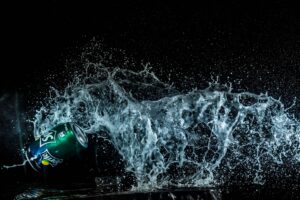From the OT perspective

(This post includes Amazon Affiliate links. I will earn a small commission if you use the link and purchase the product. There is no additional cost to you.)
Conquering the challenge of engaging reluctant writers is no easy feat, especially when addressing crucial aspects like formation, baseline adherence, spacing, and speed with occupational therapy students. As an occupational therapy professional, I’m constantly on the lookout for innovative ways to infuse enjoyment into the writing process. In this blog post, I’ll share a curated selection of activities that not only make the learning experience more enjoyable for my students but also target essential skills in a captivating manner. Join me on this journey of transforming writing sessions into dynamic and fun-filled opportunities for skill development.
1. Writing Race: Use sight words, spelling words, or a list generated by your student. Give them one minute to write as many words as they can. Do several races to see if they can write even more words as they get warmed up. Don’t just use paper… whiteboards, chalkboards, sand trays or shaving cream will add to the fun.
Other ideas:
Give them one minute to write as many sentences as they can with a given sight word.
Give them a long word or phrase and have them produce as many new words as they can.
2. Comic Book Style: Students draw pictures for first, next, then, and last then come up with words or phrases that go along with their pictures. Comic stories can be expanded to longer paragraphs. Click on the picture with a link to get access to the free template.
3. Roll it Games: Each roll of the die can be how many times they need to copy a sight word. Or they can roll to choose parts of a story to write. For Writing, I have made them for idioms, self-regulation, and over 100 different topics that work throughout the year. For in-person therapy, I print and laminate the boards to use with students. For Teletherapy, I have printed and sent them home, or I can share the PDF on screen. Click on the image for the link to my Free Resource Library. Check out my Bundle of Roll a Sentence games for every week of the year. Buy the set or an individual resource to go with one of your themes.
4. Stickers: Kids love stickers and using them is great fine motor practice. Save up all your random stickers or find sets at the dollar store. I cut them all up into individual images or small strips. Put out a variety of stickers on each table and give your students one of your journal-style writing pages. They can write sentences or a story based on the stickers. Then draw a picture to match. Check out the sticker writing template in my free resource library.
5. Games: With games like Bananagrams, Story cubes, letter matching games, Boggle, Scrabble, Letter Treasure Hunt… you can add a writing component. After your students make/find their words, they can write or type them for practice. Using the word in a sentence can expand the writing. These games are a great way to check on lowercase letter formation as they often have uppercase letter tiles. Students need to have a motor memory to form the lowercase letters from the uppercase model.



6. Digital Spinners: You can make your own spinners on the Wheel of Names site or check out this writing prompt set in my store. Use writing prompts, words, and or pictures for students to use. Check out the one in the freebie library.



Story Dice Generator
7. Story cubes: Use a set of dice from Rory’s Story Cubes or check out this website. Students roll the dice and then write a sentence or story about them.
When writing does “not smell like work” I can get even my most reluctant students to work on their writing. Hope I gave you a few new ideas to try out.

About the Author
I am a Certified Occupational Therapy Assistant (COTA) and have been working in a public school system for more than 25 years. My resources can be found on TPT, BOOM Learning, Made by Teachers, Classful, and Your Therapy Source. I appreciate your interest wherever you wish to shop.
My mission is to help you find creative ideas to incorporate fine motor, visual perception, gross motor, and social-emotional learning into your lessons.
I hope you consider signing up for my Free Resource Library with your Email. I send out emails about once a week and share resources, tips, and planning ideas for your classroom or occupational therapy needs. Hopefully, these help your students work on building their skills in a fun and engaging way.









